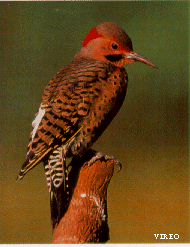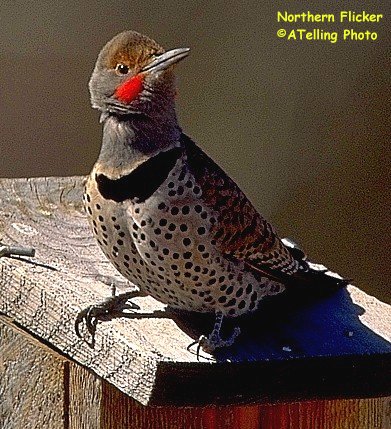Hybridization occurs nearly everywhere ranges overlap. There is a long, narrow hybrid zone between the Red- and Yellow-shafted races on the Great Plains that reaches all the way to Southern Alaska. From this, there are several intermediate shades of Northern Flicker.
It also occurs, though more limitedly, between the Red-shafted race and the currently separate species of the Gilded Flicker in the Sonoran Desert.

Gilded Flicker (C. a. chrysoides). Combines elements of both the Red- and Yellow-shafted races, but is slightly smaller. Lives in the lowlands of the Southwest. It has yellow wing linings and prefers desert areas where the saguaro cactus serves as a "tree cavity" for nesting. It is probably non-migratory, and studies have shown no difference between summer and winter plumage among Gilded Flickers in Baja California.
Below: Red-shafted race. (C. aratus cafer)

Above: Yellow-shafted race (C. aratus aratus)
. Some writers contend that this bird has as many as 120 common names, including: "yellow hammer", "yellow-shafted woodpecker", "golden-winged woodpecker", "clope", "high-hole", "yarrup", "wake-up", "wood pigeon", and "ant woodpecker."Cuban Flicker (C. a. chrysocaulosus). Allopatric. Occurs on Cuba and Grand Cayman Island. Has a bright red nape patch like the Yellow-shafted race. Presumably nonmigratory.
Guatamalan Flicker (C. a. mexicanoides). Allopatric. Occurs in the highlands of southern Mexico and south to northwestern Nicaragua. Presumably a resident in its neotropical range, but may change altitude seasonally.